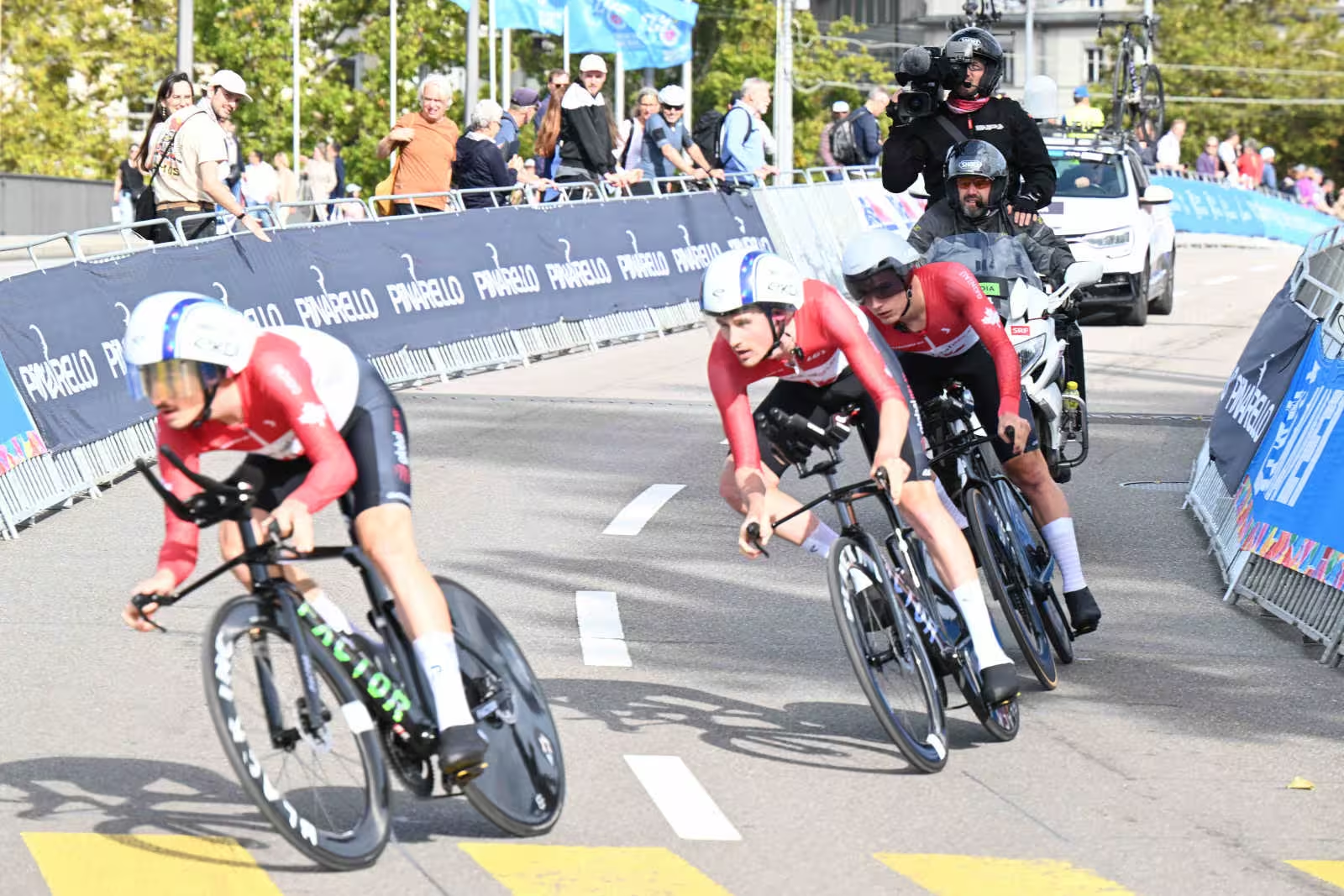Okay, I begrudgingly agree that Wednesday’s mixed relay was more exciting than usual, but I still think it’s time to ditch it and bring back the team time trial.
Olympic and world champion Grace Brown led Australia to a narrow victory over Germany in the mixed relay time trial, clinching the title by less than a second on a challenging 53.7km course. Despite dominating time trials this year, Brown is retiring at season’s end. The Australian team included Brodie Chapman and Ruby Roseman-Gannon, alongside men Ben O’Connor, Michael Matthews, and Jay Vine. They started strong, finishing the 26-km circuit ahead, with a total time of 1hr 12min 52.85. Germany, featuring Antonia Niedermaier and Maximilian Schachmann, finished just 0.85 seconds behind, while Italy took third, 8.25 seconds off the pace. Yet, despite the close finish, I still believe we’d be better off with the team time trials back.
It was a great win, for sure, but neither the Netherlands, Belgium nor Great Britain opted to enter a team. Although there were some big names racing, many riders declined to participate. I mean, a rainbow jersey is certainly cool to win, but no one who wins this event will ever wear it outside of their local club run.
Team Canada had a great ride, and even sat in the hot seat briefly. How cool was it to see Olivia Baril, Ava Holmgren, Mara Roldan, Derek Gee, Pier-André Côté and Jonas Walton all rip it!
The history of the team time trial
TTTs were a fixture of the world championships and Olympics until 1994, when countries sent teams of four to race for 100km. Back then, it was only men, however. You also regularly saw TTTs at Grand Tours.
Much like the team pursuit, it’s a beautiful sight: riders in matching kits and bikes riding seamlessly at top speed. The concept that you’re only as strong as your weakest rider rings true—you must finish with more than half your team, making cohesion essential.
They brought back team time trials in 2012. At the worlds or Olympics, it was always a quartet; at Grand Tours, it was the full team—eight or nine riders. Some might argue that TTTs skew the general classification, creating gaps between powerhouse teams, but as a standalone event, they embody everything cycling stands for: riders working together using fitness, skill, and technology to win.
Trade team TTT
The difference in 2012 was that teams were no longer national federations but trade teams. While national pride can be a factor in road races,…
Click Here to Read the Full Original Article at Canadian Cycling Magazine…

